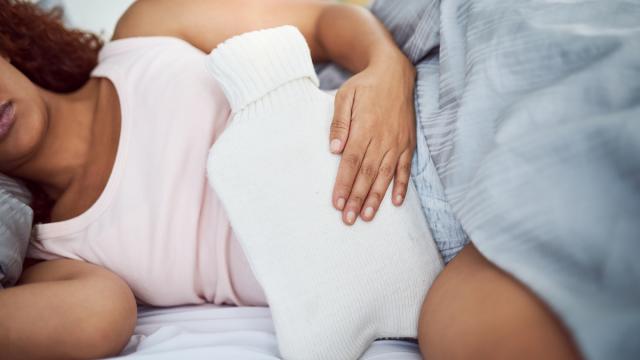Anyone who experiences serious period pain knows the deal: you’re not necessarily sick but you could be described as a shell of a human. Your lower stomach is a pit of pain, on top of all the other associated symptoms that make working more of a chore. It feels like a damn good reason to stay home from work.
But unless your boss also experiences this sort of discomfort, it’s a hard sell, especially when you could just say you have a cold or the flu. It makes you wonder — should taking a day off to deal with period pain count as a sick day, and given it’s something many people experience monthly, should period pain have its own dedicated leave category: ‘menstrual leave’?
What counts as ‘sick’ in the workplace?
In Australia, full-time employees are entitled to 10 days of paid personal, or ‘sick’, leave a year. If you’re working part-time, let’s say half a full-time worker’s hours, you’ll get five days of personal leave. Sadly, casuals receive no paid leave entitlements but the idea is that it’s made up for with a higher hourly wage — but it often isn’t.
For those who are entitled to paid leave, Australia’s FairWork Ombudsman offers some, admittedly vague, circumstances where it can be taken.
“An employee can take paid sick leave when they can’t work because of a personal illness or injury. This can include stress and pregnancy related illnesses,” the FairWork site reads.
“An employee can take paid carer’s leave to care for or support a member of their immediate family or household who is sick, injured or has an unexpected emergency.”
That means if you’re feeling unwell enough to work, you are allowed to take a day off. Each workplace will also have their own varying policies, and you may need to present a doctor’s certificate or provide an excuse.
Some of the common symptoms associated with severe period pain, known as dysmenorrhoea, include:
- headaches
- tiredness
- nausea
- dizziness
- diarrhoea
- feeling faint
As severe period pain and its associated symptoms can certainly make you feel unwell, it’s unlikely too many workplaces would argue against it counting as sick leave. Going to a doctor to get a certificate and advice on how to treat it might also be a great solution if you feel unsure.
Should people get extra days for period pain?
Adding to the period pain debate is whether menstrual leave — extra personal leave days — should be given to those that experience periods.
The Victorian Women’s Trust (VWT) has been campaigning for the idea for years, though it believes menstruation is not a sickness and therefore should not deplete a worker’s sick day pool. In 2017, the VWT announced it was adopting a menstrual leave policy allowing flexible working arrangements or paid menstrual leave days for people needing them when menstruating.
Back in 2005, the ABC reported the Australian Manufacturing Workers Union (AMWU) campaigned Toyota to provide its menstruating workers 12 paid days of menstrual leave a year, but was ultimately unsuccessful.
It might sound like a distant hope, but other countries around the world already offer the leave. Japan, South Korea, Indonesia and Taiwan all have some form of menstrual leave written into law, allowing anyone experiencing a painful period to take the day off.
Taiwan, specifically, grants an extra three days of menstrual-related leave on top of its generous 30 health-related leave days. If a person takes more than three days, it’ll just be taken out of their 30 day total.
Ending this article on a sombre note, there are unfortunately no menstrual leave bills being drafted or discussed in Australia.

Leave a Reply
You must be logged in to post a comment.